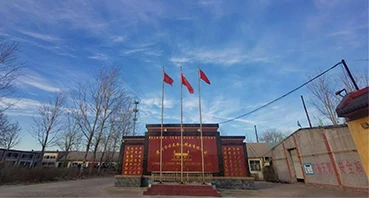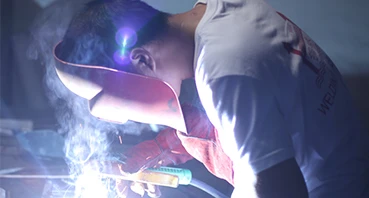AWS EZ308 Cast Iron Welding Rods 2.0mm-5.0mm
মার্চ . 04, 2025 10:42
Selecting the appropriate welding rod to join cast iron to steel can be a daunting task, even for seasoned welders. This article aims to provide an authoritative guide for those looking to undertake this unique welding challenge. With an emphasis on experience, expertise, and trustworthiness, we delve deep into the intricacies of welding cast iron to steel, ensuring that you have the knowledge necessary for a successful project.
A critical aspect of selecting the right rod includes pre-weld preparation and post-weld treatment. Thoroughly cleaning both the cast iron and steel surfaces is essential to remove contaminants like oil, paint, or rust, which could jeopardize the weld quality. Preheating the cast iron before welding is another vital step. It reduces the thermal gradient and minimizes residual stresses that promote cracking. Though steel typically does not require preheating, ensuring a uniform thermal distribution by mild preheating can enhance the overall process. Implementing the right welding technique is another crucial element in successfully joining cast iron and steel. Techniques like stick welding, which is facilitated by these nickel rods, are highly beneficial due to their deep penetration capability. Using a low current setting can also help manage the heat input, reducing the risk of inducing excessive thermal stress that could lead to cracking. Once the welding is complete, a controlled cooling process is paramount. Rapid cooling can lead to the formation of brittle phases; thus, using insulating blankets or controlled cooling chambers can help in slowing down the cooling rate, ensuring structural integrity. For project managers, material scientists, and welding specialists, the decision to weld cast iron to steel involves understanding not just the equipment and techniques but also the inherent characteristics of the materials involved. Leveraging the properties of nickel-based rods, thorough preparation, and controlled thermal practices contributes to a reliable weld. Securing a harmonious bond between these different alloys doesn't just enhance the durability and strength of the joint; it optimizes the longevity of any project utilizing these materials. Whether for repairs, manufacturing, or engineering applications, understanding these nuances empowers professionals to make informed decisions that uphold the highest standards in material fabrication. Through blending our practical experience with technical expertise, we ensure projects not only meet but exceed industry benchmarks and client expectations.


A critical aspect of selecting the right rod includes pre-weld preparation and post-weld treatment. Thoroughly cleaning both the cast iron and steel surfaces is essential to remove contaminants like oil, paint, or rust, which could jeopardize the weld quality. Preheating the cast iron before welding is another vital step. It reduces the thermal gradient and minimizes residual stresses that promote cracking. Though steel typically does not require preheating, ensuring a uniform thermal distribution by mild preheating can enhance the overall process. Implementing the right welding technique is another crucial element in successfully joining cast iron and steel. Techniques like stick welding, which is facilitated by these nickel rods, are highly beneficial due to their deep penetration capability. Using a low current setting can also help manage the heat input, reducing the risk of inducing excessive thermal stress that could lead to cracking. Once the welding is complete, a controlled cooling process is paramount. Rapid cooling can lead to the formation of brittle phases; thus, using insulating blankets or controlled cooling chambers can help in slowing down the cooling rate, ensuring structural integrity. For project managers, material scientists, and welding specialists, the decision to weld cast iron to steel involves understanding not just the equipment and techniques but also the inherent characteristics of the materials involved. Leveraging the properties of nickel-based rods, thorough preparation, and controlled thermal practices contributes to a reliable weld. Securing a harmonious bond between these different alloys doesn't just enhance the durability and strength of the joint; it optimizes the longevity of any project utilizing these materials. Whether for repairs, manufacturing, or engineering applications, understanding these nuances empowers professionals to make informed decisions that uphold the highest standards in material fabrication. Through blending our practical experience with technical expertise, we ensure projects not only meet but exceed industry benchmarks and client expectations.
Related Video
Copyright © 2025 Dingzhou Jinlong Metal Production Co., Ltd. All Rights Reserved. Sitemap | Privacy Policy




























